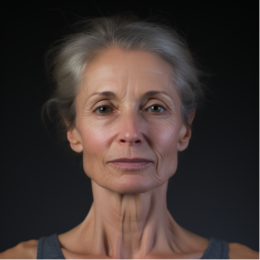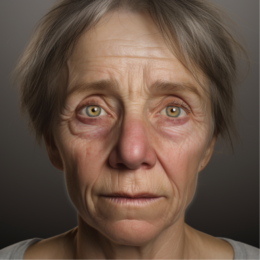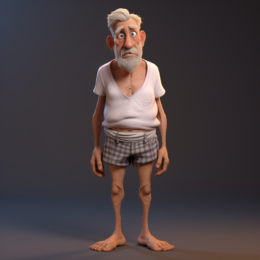4 Types of OCD: Understanding Obsessive-Compulsive Disorder

Obsessive-Compulsive Disorder (OCD) is a mental health condition characterized by intrusive thoughts (obsessions) and repetitive behaviors (compulsions). It affects millions of people worldwide and can significantly impact their daily lives. In this article, we will explore the four types of OCD, discuss their symptoms, and shed light on the behaviors associated with this disorder.
Definition of OCD Disorder
So, what is OCD disorder? Obsessive-Compulsive Disorder (OCD) is a chronic psychiatric condition that causes individuals to experience recurring thoughts, urges, or images that create anxiety or distress. These intrusive thoughts, commonly referred to as obsessions, frequently manifest repetitive behaviors or mental actions known as compulsions, which are undertaken to mitigate the accompanying anxiety.
Statistics: Research suggests that OCD often starts in childhood or adolescence, with approximately 1 in 200 children and adolescents affected by the disorder. Early identification and intervention can greatly improve outcomes for individuals with OCD.
OCD Symptoms and Behaviors
What Are OCD Symptoms? OCD symptoms can vary widely depending on the individual and the specific subtype they experience. However, some common symptoms include:
Obsessions:
- Persistent and intrusive thoughts, images, or urges.
- Fear of contamination, harm, or losing control.
- Unwanted aggressive or sexual thoughts.
Statistics: A study published in the Archives of General Psychiatry estimated that approximately 50-60% of individuals with OCD experience multiple obsessions simultaneously, which can significantly contribute to their overall distress.

Compulsions:
- Repetitive actions or cognitive processes as a response to intrusive thoughts or obsessions.
- Excessive cleaning, handwashing, or avoidance of triggering situations.
- Checking and rechecking, counting, or arranging items.
Statistics: According to the World Health Organization (WHO), OCD is ranked as one of the top 10 leading causes of disability worldwide, affecting approximately 2-3% of the global population.
How Obsessions and Compulsions Manifest in Individuals With OCD
It’s important to understand what is OCD behavior. Individuals with OCD may experience obsessions and compulsions differently, depending on their unique symptoms. Some may focus on one type of obsession to the exclusion of others, while others may have a variety of obsessions. Similarly, compulsions can vary in intensity, frequency, and complexity.
For example, someone with contamination-based OCD may feel compelled to wash their hands repeatedly to get rid of germs, while someone with harm-based OCD may feel compelled to check (e.g., door locks or stove) to ensure no one will be hurt. Still, others might experience both types of compulsions and obsessions.
Statistics: The National Institute of Mental Health reports that individuals with OCD spend an average of 1-3 hours daily engaged in compulsive behaviors, significantly impacting their daily routines and productivity.
II. What Are the 4 Types of OCD?
Contamination OCD
Contamination OCD is one of the most common subtypes. Individuals with this form of OCD have an overwhelming fear of germs, dirt, or toxins. They may excessively wash their hands, avoid touching public surfaces, or engage in elaborate cleaning rituals. Despite the repetitive behaviors, the anxiety associated with contamination often persists.
Statistics: A study published in the Journal of Clinical Psychiatry found that individuals with contamination OCD engage in handwashing rituals approximately 20 times more often than the general population, spending an average of 1-3 hours per day on this behavior.
Checking OCD
Checking OCD manifests as a persistent need to check things repeatedly, such as doors, locks, or appliances, to ensure they are secure or safe. Individuals with this subtype constantly doubt their actions, fearing that they may cause harm to themselves or others. Checking behaviors may consume significant amounts of time and disrupt daily functioning.
Statistics: According to the International OCD Foundation, individuals with checking OCD may spend up to 8 hours per day engaged in checking rituals, significantly impacting their productivity and quality of life.
Symmetry and Ordering OCD
An intense need for symmetry, precision, and perfect arrangement characterizes symmetry and Ordering OCD. Individuals with this subtype may spend excessive time arranging objects, aligning them precisely, or feeling compelled to repeat specific actions until they feel “just right.” Deviating from their established order may trigger severe distress.
Statistics: A study published in the Journal of Obsessive-Compulsive and Related Disorders found that individuals with symmetry and ordering OCD report spending an average of 5 hours per day engaging in rituals related to arranging and ordering objects, impacting their ability to complete daily tasks efficiently.
Intrusive Thoughts OCD
Intrusive Thoughts OCD involves distressing and intrusive thoughts that often involve harm or danger to oneself or others. Individuals with this subtype experience violent, sexual, or blasphemous thoughts that are contrary to their true values or beliefs. They may engage in mental rituals, such as counting or repeating prayers, to alleviate the distress caused by these thoughts.
Statistics: According to a study published in the Journal of Anxiety Disorders, approximately 80% of individuals with intrusive thoughts OCD experience multiple types of intrusive thoughts, with the most common themes being harm-related and sexual.
Conclusion
Understanding the four types of OCD and their associated symptoms and behaviors is crucial for recognizing and seeking appropriate help for this mental health condition. OCD can be debilitating, but with the right treatment, individuals can manage their symptoms and improve their quality of life. If you or someone you know is experiencing symptoms of Obssesive-Compulsive Disorder, it is important to consult a mental health professional for an accurate diagnosis and personalized treatment plan.
References:
- World Health Organization. (2017). Depression and Other Common Mental Disorders: Global Health Estimates. Retrieved from https://apps.who.int/iris/handle/10665/254610
- International OCD Foundation. (2021). OCD Subtypes. Retrieved from https://iocdf.org/about-ocd/#obsessions
- National Institute of Mental Health. (2021). Obsessive-Compulsive Disorder. Retrieved from https://www.nimh.nih.gov/health/topics/obsessive-compulsive-disorder-ocd/index.shtml





